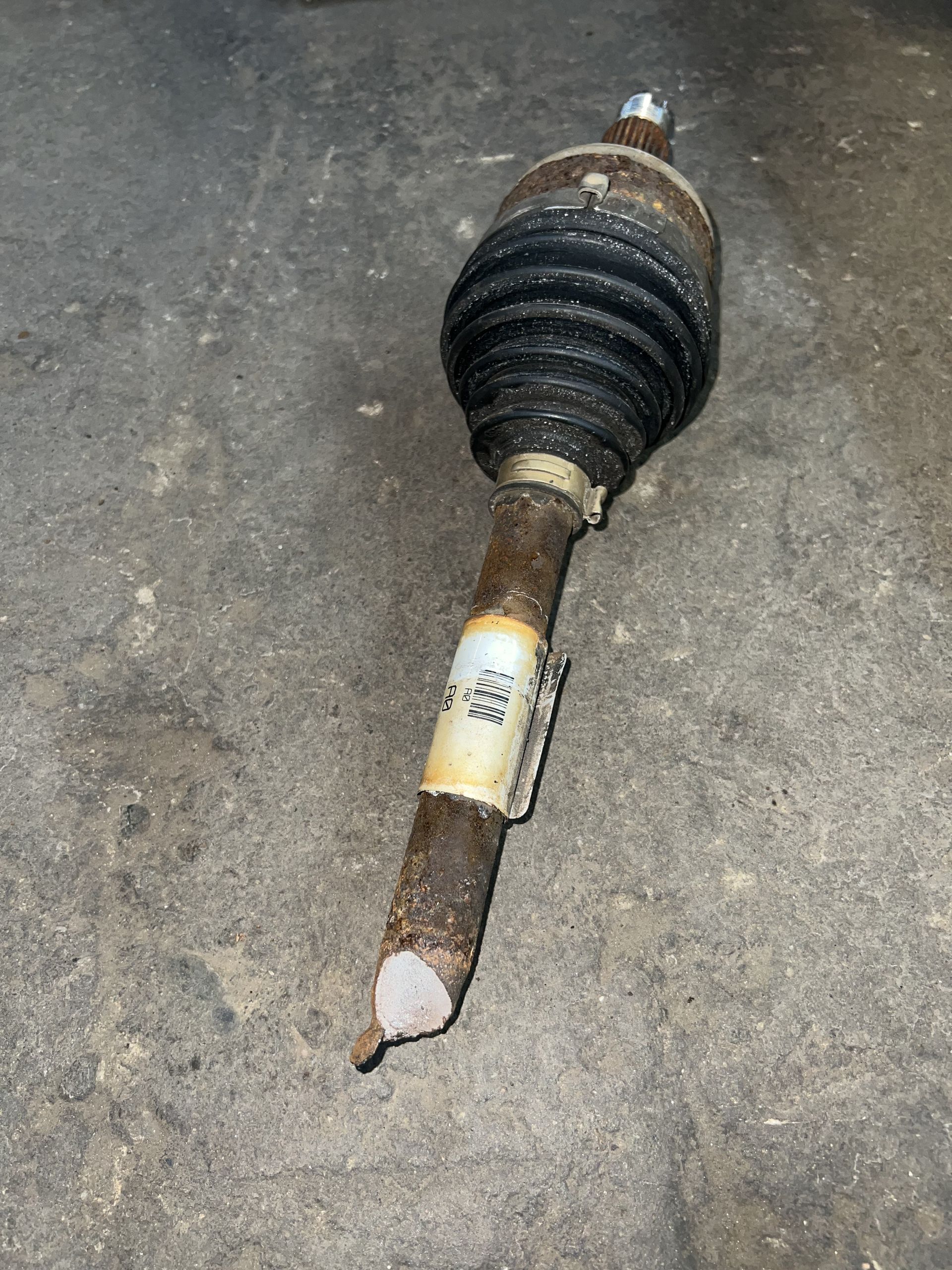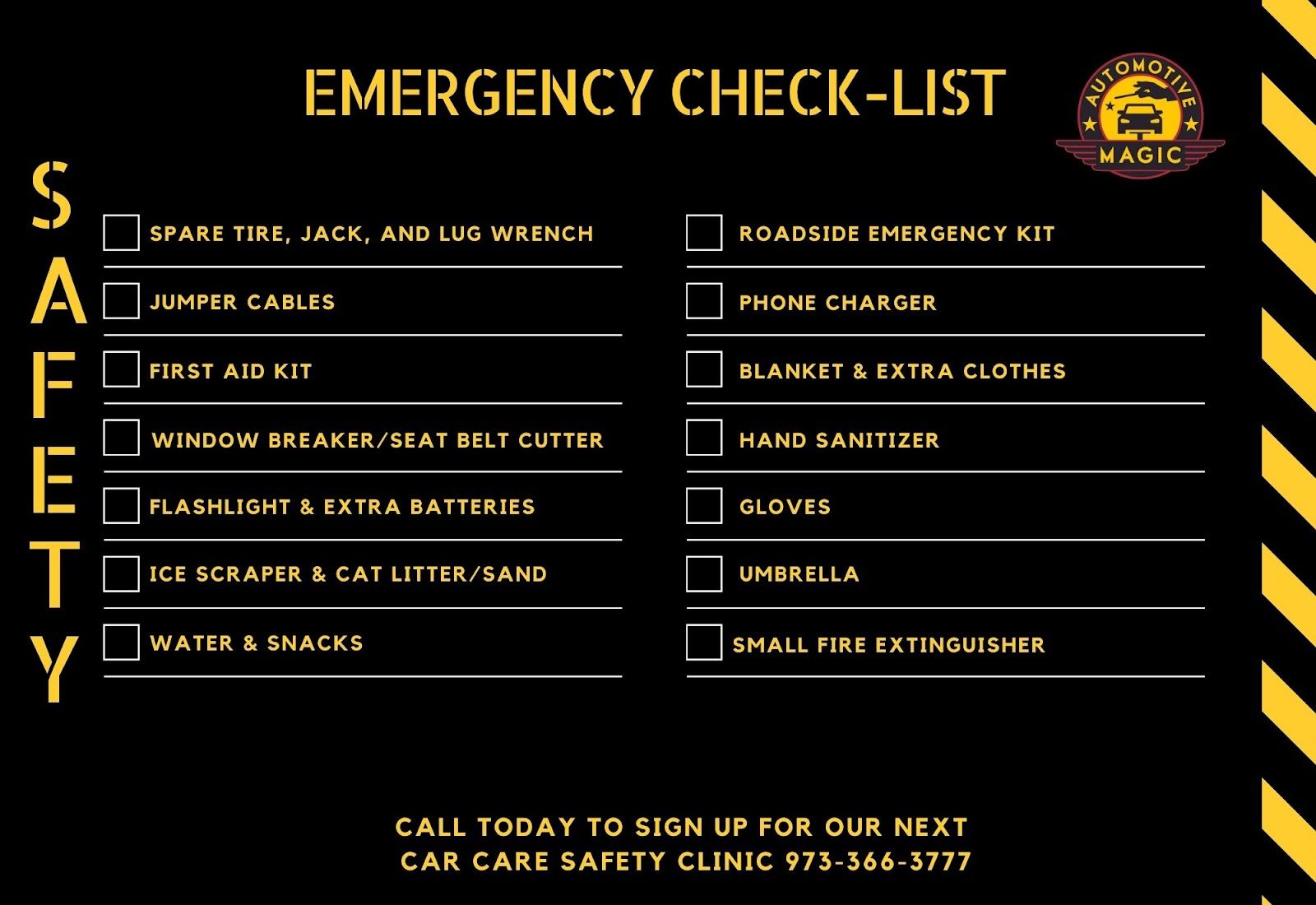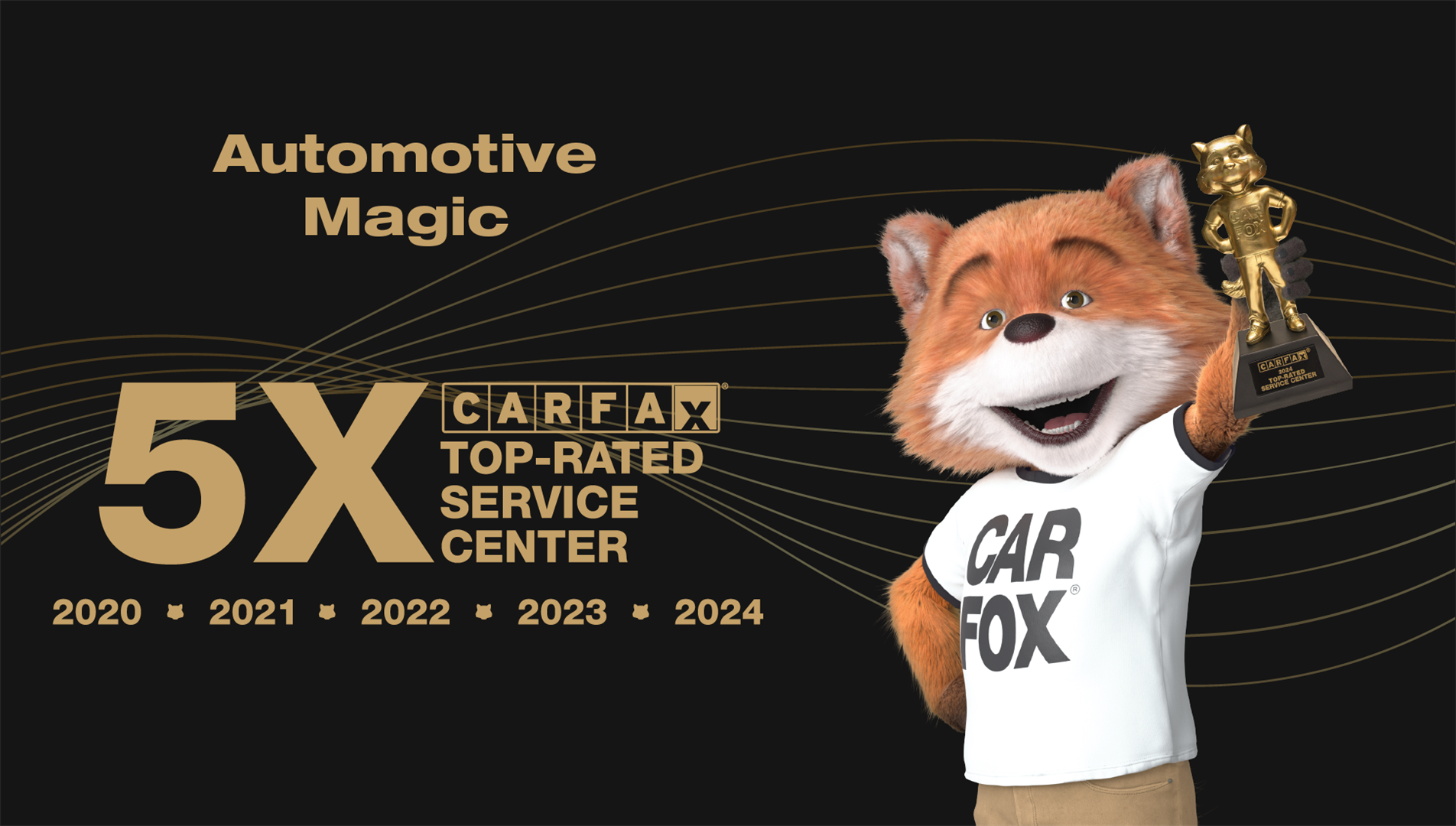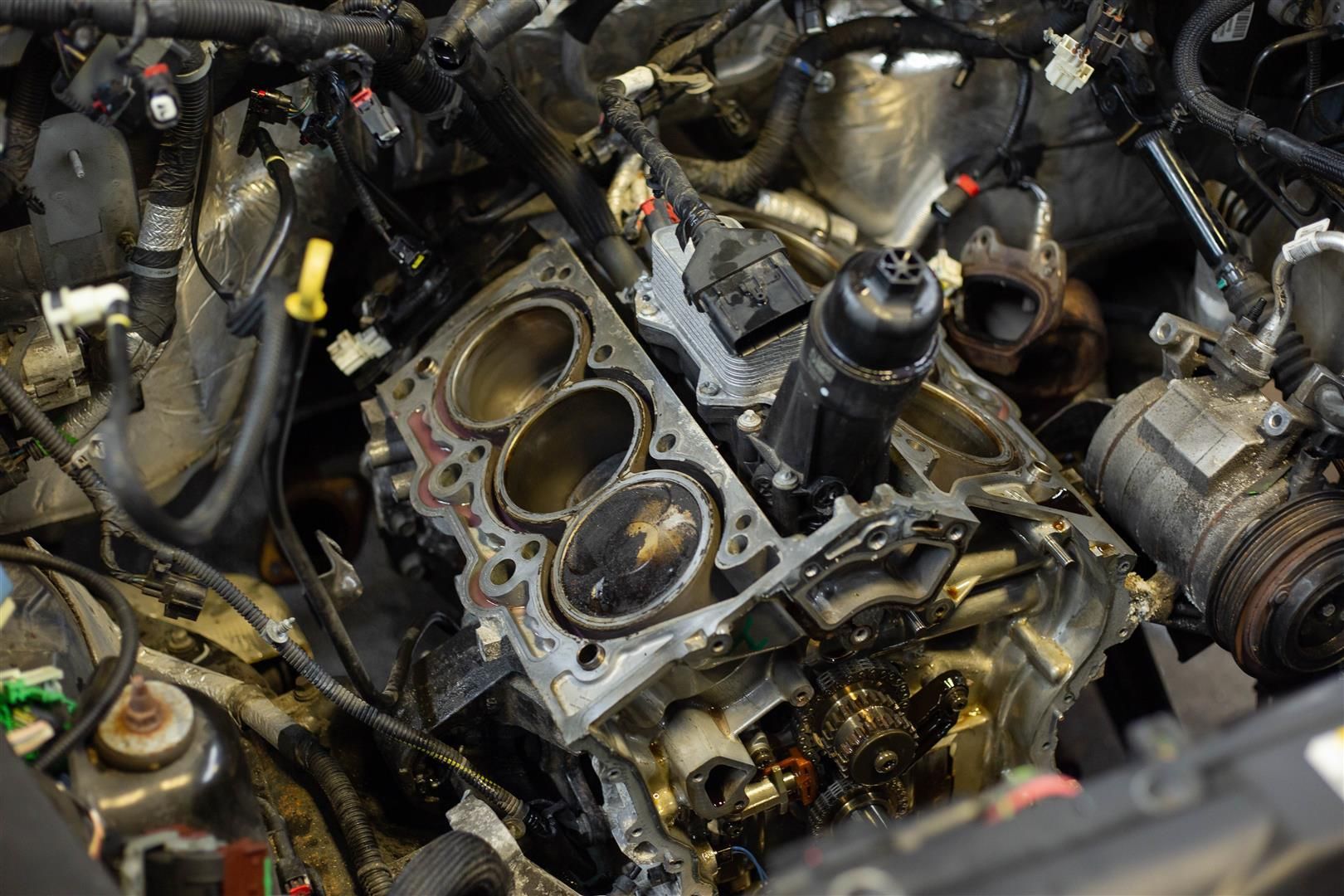Drive Belts & Pulleys: The Unsung Heroes Under Your Hood
April 9, 2025
The Unsung Heroes Under Your Hood
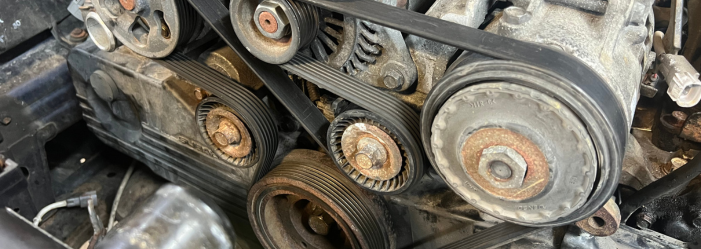
When it comes to car maintenance, there is a lot that comes into play. It can almost be overwhelming at times. Focus on common wear items like the battery, brakes, and tires are usually at the top of the list for most, but there are other items that need attention as well. Drive belts and pulleys are some of these items. These small components help keep your car running smoothly, and after a while they do wear out and need replacement. Unfortunately, failure can lead to a breakdown on the side of the road and leave you needing a tow. So what are they and what do they do? Let’s find out.
What Are Drive Belts and Pulleys?
Think of drive belts as super strong rubber bands that transfer power from your car’s engine to help run other important components. The pulleys are similar to any other pulley; they are just metal wheels that help guide and control the belts movement. However, these pulleys are attached to other engine accessories, and when the belt spins the pulleys they provide power to these other accessories. Together, they keep essential parts of your car operating.
Most modern cars use a serpentine belt, a long, continuous belt that is wrapped around multiple pulleys that power multiple systems. Older vehicles might have V-belts, which are shorter and typically run a single component at a time.
What Do Drive Belts and Pulleys Power?
Drive belts are made from durable rubber and reinforced materials, but they don’t last forever. Over time, they can crack, stretch, fray, glaze, or even snap. Pulleys have a lifespan as well. They are subject to corrosion and the bearings can go bad and even seize up completely. Without drive belts and pulleys, several key systems in your car wouldn’t function properly. Here’s what they keep running and what can happen if they fail.
Alternator
– Powers your car’s electrical system and keeps the battery charged. If the belt breaks, your battery will eventually die, leaving you with a car that won’t start or may die while you are driving.
Water Pump
– Circulates coolant to prevent your engine from overheating. A broken belt could lead to severe engine damage due to overheating.
Power Steering Pump – Makes turning the steering wheel easier. If the belt slips or breaks, steering your car instantly becomes much harder, especially at low speeds.
Air Conditioning Compressor
– Helps keep your car cool on hot days. While not as critical as other components, losing A/C can be uncomfortable.
Drive Belts and Pulley Maintenance
Drive belts and pulleys don’t necessarily require maintenance, but they should be inspected regularly. In some cases, a bad pulley can cause the belt to slip or even pop off of the pulley completely. There are a few things to look for that may tell you it’s time for replacement.
Check for Cracks, Fraying, or Glazing
– Look for visible signs of wear on the belt. If you see cracks, missing ribs, fraying, or a shiny, glazed appearance, it’s time for a replacement.
Listen for Strange Noises – A worn out belt or pulley may slip on the pulleys and cause a high-pitched squealing, chirping, or rattling noise when you start the car or turn the wheel.
Watch for Performance Issues
– If your battery warning light comes on, your power steering feels heavy, or your car starts overheating, a belt or pulley could be the culprit.
Have Regular Inspections – Most belts last between 50,000 to 100,000
miles, but checking them during routine maintenance can prevent unexpected failures.
Replace Before It Fails – A worn belt may still work, but it could snap at any moment. Replacing it early saves you from the headache of a sudden breakdown.
Final Thoughts
Drive belts and pulleys may not be the most glamorous parts of your car, but they play an essential role in keeping your car running smoothly. Keeping them in good condition helps ensure your car stays reliable and safe.
At Automotive Magic, we offer a bumper to bumper vehicle health inspection that includes checking belts and pulleys for wear. Our inspections are sent to you with photos, videos, and descriptions explaining any issues we find with your vehicle and their severity to keep you on the road with confidence. Stop by today or schedule an appointment, and let’s make sure your car is running at its best!

Shawn Gilfillan is the dedicated owner of Automotive Magic in Kenvil, NJ. With over two decades of experience, Shawn has led his team in providing expert auto repair and service since 2003.
In 2022, Magic Lube & Rubber was born in Lake Hopatcong, NJ. Committed to fostering strong community ties and supporting team development, Shawn prioritizes customer satisfaction above all. As a proud family man and long-time resident of Roxbury, NJ, Shawn brings a blend of professionalism and warmth to his business.
Trust Shawn and his team for all your automotive needs with confidence and assurance.

March 25, 2025
Your Solution is Right Here! Automotive Magic offers on-site car rentals to help you stay on the move while your vehicle is being serviced? That’s right — Rabbit Wheels Car Rental Service is available at both locations, and it’s becoming a client favorite! Dropping off your vehicle for service can sometimes feel like hitting the pause button on your day and coordinating rides, waiting around, or juggling your schedule just to stay mobile? It’s a hassle. That’s exactly why we’ve been offering Rabbit Wheels — a convenient rental solution designed with your busy life in mind. While Rabbit Wheels has been available for a while, it's now truly taking off as more clients realize just how effortless it makes their service experience. When you're at Automotive Magic in Kenvil, the process is simple, seamless, and all about keeping you moving. Here’s How It Works: Drop off your car for service, and instead of worrying about how you’ll get around, you can make a reservation for a reliable Rabbit Wheels rental, available right on-site. No waiting. No extra stops. Just keys in hand and freedom to go about your day. Why Clients Love Rabbit Wheels: Speed: Quick and easy rental process — get back on the road fast. Reliability: Well-maintained vehicles ready when you are. Affordability: A cost-effective way to avoid downtime without breaking the bank. Whether you’re heading to work, tackling errands, or just want the freedom to come and go while your vehicle is in expert hands, Rabbit Wheels has got you covered. At Automotive Magic, we’re dedicated to giving our clients the best experience possible — and that means minimizing inconvenience while maximizing your time and flexibility. Let’s Keep You Moving! Don't let vehicle service disrupt your plans. Call today to make your reservation for both your service and your Rabbit Wheels rental — all in one easy step. Because when it comes to convenience, we’ve thought of everything — including the wheels to keep you going!
Professional Auto Services
cost-effectively provided.
Services
List of Services
-
Car A/C & Heat RepairCar A/C & Heat Repair
-
Brake Repair & ServiceBrake Repair & Service
-
Diagnostics & InspectionsDiagnostics & Inspections
-
Fleet ServiceFleet Service
-
Maintenance & Tune-UpsMaintenance & Tune-Ups
-
Oil & Lube ChangesOil & Lube Changes
-
Tire Service & AlignmentsTire Service & Alignments
-
Transmission ServiceTransmission Service
List of Services
-
Car A/C & Heat RepairCar A/C & Heat Repair
-
Brake Repair & ServiceBrake Repair & Service
-
Diagnostics & InspectionsDiagnostics & Inspections
-
Fleet ServiceFleet Service
-
Maintenance & Tune-UpsMaintenance & Tune-Ups
-
Oil & Lube ChangesOil & Lube Changes
-
Tire Service & AlignmentsTire Service & Alignments
-
Transmission ServiceTransmission Service




Services
List of Services
-
Car A/C & Heat RepairCar A/C & Heat Repair
-
Brake Repair & ServiceBrake Repair & Service
-
Diagnostics & InspectionsDiagnostics & Inspections
-
Fleet ServiceFleet Service
-
Maintenance & Tune-UpsMaintenance & Tune-Ups
-
Oil & Lube ChangesOil & Lube Changes
-
Tire Service & AlignmentsTire Service & Alignments
-
Transmission ServiceTransmission Service
List of Services
-
Car A/C & Heat RepairCar A/C & Heat Repair
-
Brake Repair & ServiceBrake Repair & Service
-
Diagnostics & InspectionsDiagnostics & Inspections
-
Fleet ServiceFleet Service
-
Maintenance & Tune-UpsMaintenance & Tune-Ups
-
Oil & Lube ChangesOil & Lube Changes
-
Tire Service & AlignmentsTire Service & Alignments
-
Transmission ServiceTransmission Service
© 2024 Automotive Magic. All Rights Reserved | Website managed by Shopgenie

